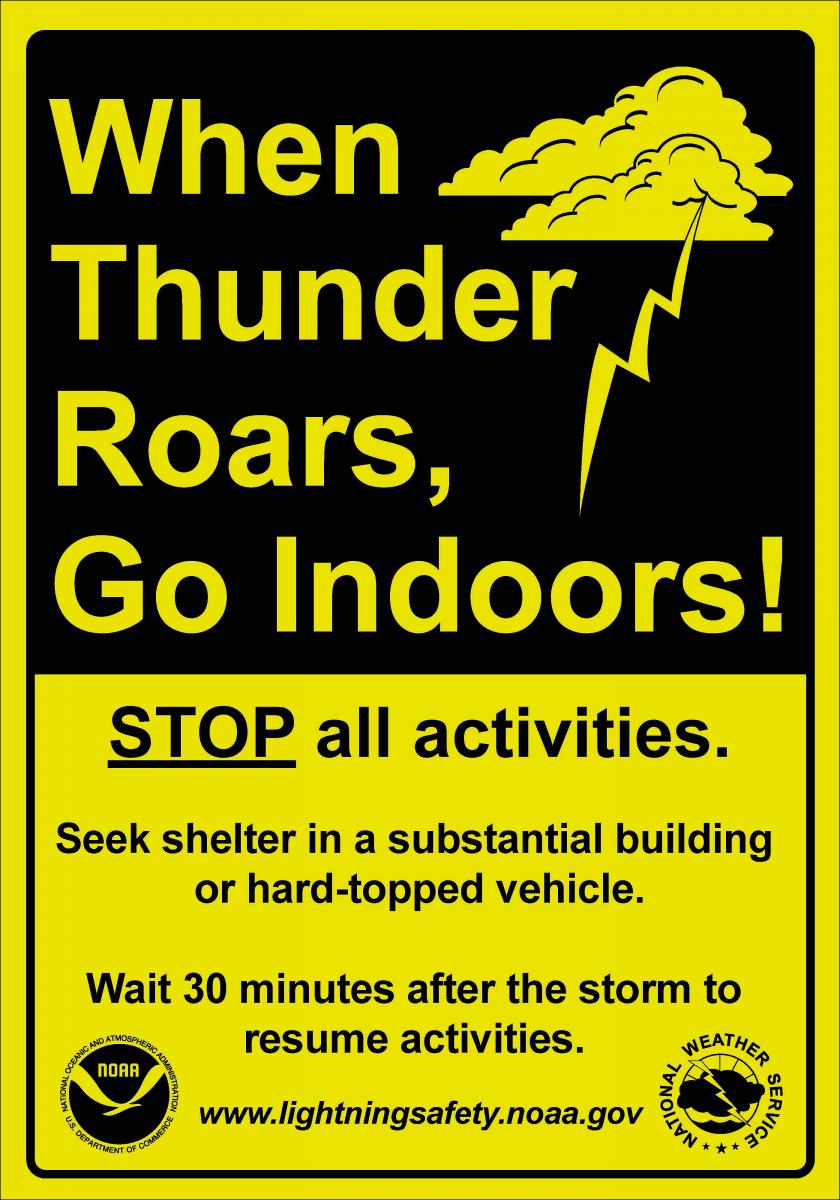Question and Answer with NOAA's Top Lightning Expert
When John Jensenius hits the road to educate people about the danger of being outside during a thunderstorm, he unleashes his alter-ego - a character styled after Einstein named “Doctor Lightning.” True to form, the “doctor” wears a white lab coat marked with the NOAA logo and dons a wild mop of white hair sprouting in all directions - perhaps a subliminal message about how an electrical charge can make a person’s hair stand on end.
Jensenius, a 42-year veteran meteorologist at the National Weather Service, is one of 122 warning coordination meteorologists stationed at forecast offices throughout the country. From his post in Gray, Maine, he’s become an impassioned advocate for lightning safety - putting him in the national spotlight as one of the country’s top lighting safety experts.
Dr. Lightning is calm and credible, offering a steady and trusted voice in a sea of public safety messages bombarding people on a daily basis about all things that could harm them - from eating Tide pods to not wearing sunscreen.
 [Dr. Lightning and Leon, the Lightning Safety Lion, pose with a family at Storyland in Glen, New Hampshire on June, 20 2015.]
[Dr. Lightning and Leon, the Lightning Safety Lion, pose with a family at Storyland in Glen, New Hampshire on June, 20 2015.]
So, what drives such passion and dedication to save people from a single type of weather event? We spoke with John to learn more.
Why lightning? Simply put, death by lightning is a preventable tragedy and I believe that if people are educated about the danger and know what to do to stay safe, they will make the right decisions. Along with our partners, I believe we at the National Weather Service can use our public platforms, including our lightning safety website, to really make a difference and reduce these preventable deaths. When I began working for the National Weather Service in Maine, I was surprised to learn the state was ranked 4th highest in the country for total amount of lightning fatalities at the time, despite the fact we had fewer total lightning strikes overall. This was a wake-up call for me. Ever since, I’ve been working to make a dent in the nation-wide statistics.
What have you learned from years of analyzing lightning fatality data? For a long time, lightning never got the attention it deserved as a real hazard. There were myths and a lot of unknowns surrounding fatal strikes. So in 2006 I created a database of lightning fatalities that contains all the relevant information. I keep track of the time, place, what someone was doing before it happened, and even their age and gender. For example, data shows that men account for 79% of all lightning fatalities. One of the most important pieces of information to know is what they were doing, because once we see the riskiest activities we can learn to be cautious when engaged in them. And I think sharing this information has paid off. In 2001 there was an average of 73 total deaths by lightning, and in 2017 there was a record low of 16.
 So what are the riskiest activities?
Data shows that 64% of all fatalities occurred when someone was involved in leisure activities, half of which were water-related like swimming, beach-going, boating, and fishing. It’s now possible to infer from fatality data that lightning strikes can be avoided with proper safety actions. Most people are just in the wrong place at the wrong time when lightning strikes them, and the wrong place is outside and the wrong time is during a thunderstorm.
So what are the riskiest activities?
Data shows that 64% of all fatalities occurred when someone was involved in leisure activities, half of which were water-related like swimming, beach-going, boating, and fishing. It’s now possible to infer from fatality data that lightning strikes can be avoided with proper safety actions. Most people are just in the wrong place at the wrong time when lightning strikes them, and the wrong place is outside and the wrong time is during a thunderstorm.
What’s the best part of your job? By far the best part of my job is seeing the dedication and passion that my coworkers in weather and emergency management have for public outreach and safety. And when I retire, I will continue my own efforts to track lightning fatalities and to provide resources for people to protect themselves from lightning strikes.
What do you want readers to take away from this interview? When Thunder Roars, Go Indoors!
Edited for WeatherNation by Meteorologist Mace Michaels